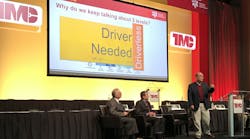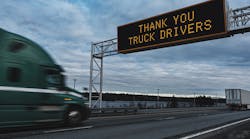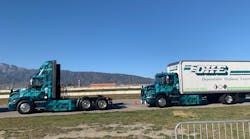Over the past five years, the National Highway Traffic Safety Administration and SAE International have issued standards for automated driving.
SAE’s definitions, initially released in 2014 and updated in 2016, seemed fairly straight forward, with Level 0 representing no automation and Level 5 indicating complete automation. However, it became apparent at last week’s Technology & Maintenance Council annual meeting that it may be time for SAE to consider significant revisions.
Bill Kahn, principal engineer and manager of advanced concepts at Peterbilt Motors, questioned whether Level 3 automation is financial viable or safe.
Level 3 is an automated driving system that can monitor the overall environment and control acceleration, braking, and steering. The issue is that drivers must be prepared to take back control of the vehicle in a relatively short time frame.
Kahn said Level 3 requires a major financial investment in technology with not enough payback.
He stressed the goal of automated trucking should be to “influence hours of service,” and allow drivers to extend their days. That added productivity would be needed to offset the higher cost of automated equipment, but Kahn doubted Level 3 would persuade federal lawmakers to consider a change.
Chuck Price, vice president at TuSimple, and Jonny Morris, head of public policy at Embark Technology, were among others at TMC to question the viability of Level 3 systems.
Each of these companies are working on Level 4 systems, which mean a truck can operate without human input or oversight, under certain conditions. For trucking, that would likely mean a vehicle operating autonomously on long stretches of open highway, with a driver taking control at the beginning and end of trips.
Peterbilt and TuSimple each displayed its technology earlier this year at the CES show in Las Vegas. TuSimple is a Chinese company founded in 2015. It has been testing its software in China and the United States. Last month, Embark announced it completed a coast-to-coast trip with an automated truck.
Fred Andersky, director of customer solutions and marketing for the Controls Group of Bendix Commercial Vehicle Systems, suggested the entire existing standard system should be done differently.
“Five levels make absolutely no sense to the public,” he said. Instead, creating a more basic system of when a driver is needed or not needed would help eliminate confusion.
During a panel discussion, he showed a slide illustrating that Levels 0-4 require a driver and Level 5 is driverless. In response to an audience question, he acknowledged there are situations where Level 4 could be considered “driverless.” However, he stood firm on the need to make the autonomous definitions more easily digestible for the public to gain faster acceptance.
How close it too close when platooning?
Another hot topic at TMC was how close is too close when trucks are platooning. Peterbilt’s Kahn said 66 feet “appears to be the sweet spot.”
Speaking at TMC’s automated driving and platooning task force, he said there are heating issues under the hood when platooning trucks are too close, which could be about the 33-foot mark.
If the fan needs to come on to cool the engine, it cuts into the potential fuel economy gains, he said.
Edmund Hodzen, director of advanced engineering control systems at Cummins Inc., said platooning benefits can still be realized when trucks are 90 feet or further apart.
Cummins is part of the Next-Generation Energy Technologies for Connected and Autonomous On-Road Vehicles (NEXTCAR) program sponsored by the U.S Department of Energy’s Advanced Research Projects Agency-Energy (ARPA-E).
The group is studying a range of ways to optimize the gains from platooning. Even as the issues are ironed out, Kahn said there is no reason why “platooning can’t be the cruise control of the future.”




